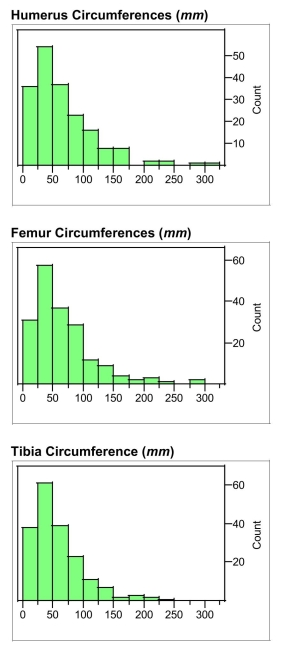The average circumferences (distances around) in mm of the humerus, femur, and tibia
of different species of mammals are displayed below. These long bones primarily
support the body mass in mammals. Each data value is the mean circumference for
the available measures for a single species. (a)Describe the differences and similarities in the distributions of these different bones.
(b) Biologists speculate that greater weights might be supported by larger bones. Based on the histograms, if the biologists' speculations are correct, which of these bones (humerus, femur, or tibia) would seem to be the least able to support a large weight? Explain, referring to specific aspects of the histograms.
Definitions:
Socialists
People who advocate for socialism, a political and economic theory of social organization advocating for the means of production, distribution, and exchange to be owned or regulated by the community as a whole.
Federalists
Supporters of the ratification of the U.S. Constitution, advocating for a strong federal government and the creation of a union of states with a centralized authority.
Federal Legislation
Laws passed by the national government of a federal country.
Waiver
An intentional relinquishment or surrender of some known right or privilege.
Q1: Random assignment of volunteers to treatments will,
Q3: If the <span class="ql-formula" data-value="P"><span
Q15: Let <span class="ql-formula" data-value="S"><span class="katex"><span
Q20: The number of degrees of freedom
Q25: In a few sentences, describe the difference
Q30: In a few sentences, describe the difference
Q34: Stratified sampling does not involve simple random
Q89: Use power series to solve the
Q95: Find the work done by the
Q108: The fertility rates-the number of children per